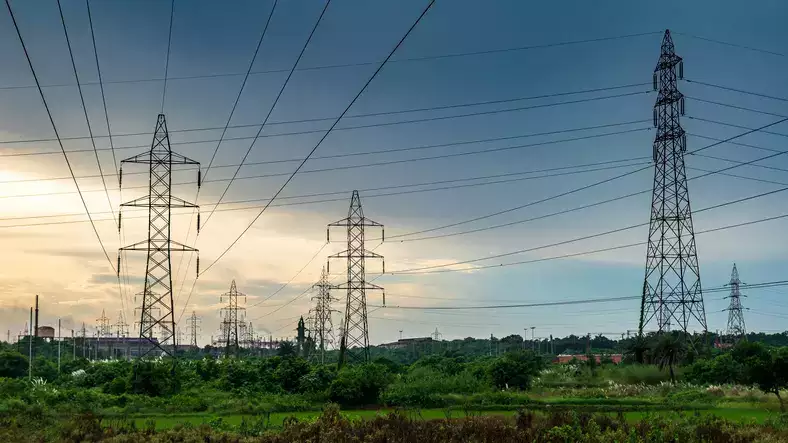Description

Copyright infringement not intended
Context: The Union power ministry has requested the Central Electricity Regulatory Authority to initiate the process of coupling the country's three power exchanges, which would help to ensure uniformity in the price discovery of energy at trading platforms. This move is expected to translate into better transparency, help to bring down power tariffs significantly and provide uniform price discovery across exchanges.
Details
- Power exchanges are platforms where buyers and sellers of electricity can trade power contracts for different periods, such as day-ahead, real-time, intra-day, weekly, monthly, etc.
- Power exchanges also facilitate the trading of renewable energy certificates (RECs) and energy saving certificates (ESCerts), which are instruments to promote green energy and energy efficiency in the country.
Present Model and Challenges
- India has three power exchanges:
- Indian Energy Exchange (IEX) is the oldest and largest power exchange in India, with a market share of over 98% of the traded volume in power.
- Power Exchange India Limited (PXIL) is the second-largest power exchange, with a market share of about 1.5%.
- Hindustan Power Exchange (HPX) is the newest power exchange.
No coordination
- Currently, each power exchange operates independently, with its trading platform, clearing mechanism, settlement system, and market rules. This means that there is no coordination or synchronization among the three power exchanges, resulting in different prices for the same product on different platforms. For example, on 10 June 2023, the average market clearing price (MCP) for the day-ahead market (DAM) at IEX was Rs. 6.55 per kWh, while at PXIL it was Rs. 6.38 per kWh.
Price difference
- This price difference creates inefficiencies and arbitrage opportunities in the market, as some participants may prefer to trade at one platform over another based on price advantage. Moreover, this price difference also affects the demand and supply balance in the market, as some regions may face congestion or curtailment due to a mismatch between the availability and requirement of power.

New Proposal
- The power ministry has proposed to couple the three power exchanges, which means that they will have a common trading platform, clearing mechanism, settlement system, and market rules. This will ensure that there is a single price for each product across all platforms, reflecting the true value of electricity in the market.
- The coupling will also enhance competition and liquidity in the market, as more participants will be able to trade at a common platform with greater transparency and efficiency.
Is it a new Concept?
- The coupling of power exchanges is not a new concept globally. Many countries have adopted this model to integrate their power markets and create a regional or national electricity market. For example:
- Europe has a single day-ahead market called EUPHEMIA (PAN European Hybrid Electricity Market Integration Algorithm), which covers 23 countries and accounts for over 85% of European electricity consumption.
- Australia has a national electricity market (NEM), which covers five states and one territory and operates on a single trading platform.
Coupling of power exchanges
- Coupling of power exchanges means that all the bids and offers for a particular product will be pooled together and matched at a single price, irrespective of which exchange they are placed on.
- This will eliminate price differences across exchanges and ensure a fair and competitive market for all participants. It also increases the liquidity and depth of the market, as more buyers and sellers will be able to access a larger pool of contracts.
However, the coupling of power exchanges also poses some challenges and requires careful planning and implementation. Some of the key challenges are:
- Harmonizing the trading rules, clearing mechanisms and settlement systems of different exchanges to ensure a smooth and seamless integration.
- Ensuring adequate transmission capacity and grid stability to facilitate cross-border power flows among different regions.
- Addressing the regulatory and legal issues related to jurisdiction, dispute resolution and consumer protection in a coupled market.
- Developing a robust IT infrastructure and cybersecurity framework to support data exchange and communication among different entities.
The way forward for coupling power exchanges in India is to adopt a phased and consultative approach, involving all the stakeholders such as CERA, power exchanges, transmission utilities, generators, distributors, traders and consumers.
- The first step is to conduct a feasibility study and a cost-benefit analysis of coupling, taking into account the technical, economic, regulatory and legal aspects.
- The next step is to design a detailed roadmap and timeline for coupling, outlining the roles and responsibilities of different entities, the milestones and deliverables, and the monitoring and evaluation mechanisms.
- The final step is to implement coupling in a pilot mode, followed by a full-scale rollout after assessing the performance and feedback.
The coupling of power exchanges is a progressive and visionary initiative that can transform India's power sector and bring it to par with global standards.
- It can foster competition, innovation and efficiency in the power market, leading to lower prices, better quality and greater reliability of electricity supply for consumers.
- It can also enable greater integration of renewable energy sources into the grid, supporting India's green energy transition and climate goals.
- It is not only desirable but also inevitable in the long run, as India moves towards a more open and interconnected power system.

Conclusion
- The coupling of power exchanges in India will be a significant step towards creating a national electricity market that can cater to the growing and diverse needs of the country's power sector. It will also align with the government's vision of 'One Nation One Grid One Price', which aims to provide affordable and reliable power to all consumers across the country.
Must Read:
Power Sector: https://www.iasgyan.in/daily-current-affairs/power-sector
https://economictimes.indiatimes.com/industry/energy/power/power-trading-government-asks-regulator-cerc-to-begin-process-for-coupling-power-exchanges/articleshow/100899550.cms
















